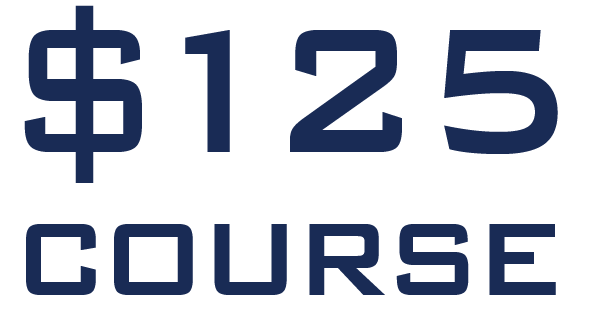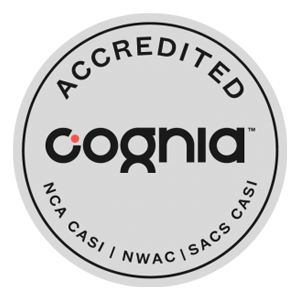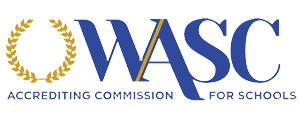Reducing Tariff Exposure: Optimizing U.S. Manufacturing and Assembly for Global Competitiveness
In today’s dynamic global economy, businesses face unprecedented challenges in navigating the complex landscape of international trade. With the rise of trade tensions, new tariffs, and shifting trade policies, companies must adapt their strategies to remain competitive and mitigate risks associated with tariff exposure. This comprehensive guide explores how optimizing U.S. manufacturing and assembly processes can help businesses reduce tariff exposure, enhance supply chain resilience, and maintain a competitive edge in the global market.
Understanding Tariff Exposure and Its Impact on U.S. Businesses
Tariff exposure refers to the potential financial impact that import duties and tariffs can have on a company’s bottom line. In recent years, businesses have faced significant challenges due to new tariffs, trade wars, and ongoing trade uncertainty. These factors have led to increased costs, disrupted supply chains, and forced many companies to re-evaluate their manufacturing and sourcing strategies.
The impact of tariffs on U.S. businesses has been substantial, affecting various industries from consumer electronics to automotive manufacturing. Many companies have seen their production costs rise, leading to higher prices for consumers and potentially reduced profit margins. To address these challenges, businesses must adopt a proactive approach to reducing tariff exposure and optimizing their operations.
Strategies for Reducing Tariff Exposure Through Smarter U.S. Manufacturing and Assembly
1. Leveraging Free Trade Agreements and Foreign Trade Zones
One of the most effective ways to reduce tariff exposure is by taking advantage of free trade agreements (FTAs) and foreign trade zones (FTZs). These mechanisms can help businesses lower their duty payments and optimize their supply chain strategies.
- Free Trade Agreements: The United States has numerous FTAs with trading partners around the world, including the USMCA (United States-Mexico-Canada Agreement) and agreements with countries in Latin America, Asia, and other regions. By leveraging these agreements, companies can benefit from lower tariff rates or even duty-free treatment for qualifying goods.
- Foreign Trade Zones: FTZs are designated areas within the United States where foreign and domestic merchandise can be stored, assembled, or manufactured without being subject to formal customs entry procedures and import duties. Utilizing FTZs can help companies defer, reduce, or eliminate customs duties on imported components and finished products.
To effectively leverage FTAs and FTZs, businesses should:
- Conduct a thorough analysis of their supply chains to identify opportunities for duty savings
- Ensure compliance with rules of origin and other requirements specified in trade agreements
- Consider establishing operations within FTZs to take advantage of duty deferral and other benefits
- Stay informed about new trade agreements and policy changes that may affect their operations
2. Optimizing Supply Chain Management and Sourcing Strategies
Effective supply chain management is crucial for reducing tariff exposure and maintaining cost competitiveness. By re-evaluating and optimizing their supply chains, businesses can mitigate risks associated with tariffs and trade uncertainty.
- Diversify Supplier Networks: Relying on a single source or region for key components or raw materials can increase vulnerability to tariffs and supply chain disruptions. Companies should explore alternative suppliers in different regions to reduce dependency and mitigate risks.
- Implement Just-in-Time Inventory Management: By optimizing inventory levels and implementing just-in-time practices, businesses can reduce storage costs and minimize the impact of tariff fluctuations on their cash flow.
- Utilize Strategic Warehousing: Establishing strategic warehousing locations can help companies optimize their logistics and reduce transportation costs while maintaining flexibility in response to tariff changes.
- Invest in Supply Chain Analytics: Advanced analytics tools can help businesses simulate various tariff scenarios, track shipments in real-time, and make informed decisions about sourcing and production strategies.
By implementing these strategies, companies can enhance their supply chain resilience and better navigate the challenges posed by tariffs and trade uncertainty.
3. Investing in Domestic Production and Final Assembly
Shifting production and final assembly processes to the United States can be an effective strategy for reducing tariff exposure and protecting domestic industries. While this approach may involve higher initial costs, it can offer long-term benefits in terms of tariff avoidance and increased control over the production process.
- Evaluate the Cost-Benefit of Domestic Production: Conduct a comprehensive analysis of the costs associated with domestic production versus importing components or finished goods. Consider factors such as labor costs, transportation expenses, and potential government incentives for domestic manufacturing.
- Invest in Automation and Advanced Manufacturing Technologies: To remain competitive with overseas manufacturing, U.S. companies should invest in automation, robotics, and other advanced technologies to improve efficiency and reduce production costs.
- Explore Reshoring Opportunities: Assess which components or products can be cost-effectively manufactured or assembled in the United States. This may involve re-engineering products or processes to optimize for domestic production.
- Leverage Government Incentives: Take advantage of federal, state, and local incentives designed to encourage domestic manufacturing and job creation. Programs like the Inflation Reduction Act offer significant benefits for companies investing in certain industries, such as electric vehicle production.
By investing in domestic production and final assembly, companies can not only reduce their tariff exposure but also contribute to job creation and economic growth in the United States.
4. Implementing Tariff Engineering Strategies
Tariff engineering involves strategically designing or modifying products to achieve a more favorable tariff classification. This approach can help businesses reduce their tariff costs while remaining compliant with trade regulations.
- Analyze Product Classifications: Conduct a thorough review of your product portfolio to identify opportunities for reclassification under lower tariff categories.
- Modify Product Designs: Consider making minor modifications to products that could result in a different tariff classification with lower duty rates.
- Unbundle or Repackage Products: In some cases, separating components or repackaging products can lead to more favorable tariff treatment.
- Consult with Customs and Trade Experts: Work with experienced professionals to ensure that any tariff engineering strategies comply with customs regulations and the Harmonized Tariff Schedule.
While tariff engineering can be an effective strategy for reducing tariff exposure, it’s crucial to approach this tactic carefully and in compliance with all relevant trade regulations.
Case Studies: Successful Tariff Reduction Strategies in U.S. Manufacturing
Case Study 1: Automotive Manufacturing
The automotive industry has been significantly impacted by tariffs on imported steel, aluminum, and various components. In response, several car manufacturers have implemented strategies to reduce their tariff exposure:
- Localization of Production: Major automakers have invested billions of dollars in expanding their U.S. manufacturing facilities, including the construction of new battery plants for electric vehicles. This shift has helped reduce dependency on imported components and qualify for lower tariff rates under USMCA rules.
- Supply Chain Restructuring: Automotive companies have worked closely with their supplier networks to identify opportunities for localizing production of key components, reducing their exposure to tariffs on imported parts.
- Tariff Engineering: Some manufacturers have redesigned certain vehicle models to qualify for lower tariff categories, such as reclassifying certain SUVs as passenger vehicles to avoid higher truck tariffs.
These strategies have helped automotive manufacturers mitigate the impact of tariffs and maintain their competitiveness in the global market.
Case Study 2: Consumer Electronics
The consumer electronics industry, heavily dependent on imports from China and other Asian countries, has faced significant challenges due to tariffs. Here’s how some companies have adapted:
- Diversification of Manufacturing: Major electronics companies have shifted portions of their production to countries like Vietnam, India, and Mexico to reduce their exposure to China tariffs.
- Investment in U.S. Assembly: Some firms have increased their final assembly operations in the United States, allowing them to import components at lower tariff rates and complete the manufacturing process domestically.
- Strategic Use of FTZs: Electronics manufacturers have utilized foreign trade zones to defer or reduce duty payments on imported components, helping to manage cash flow and reduce overall tariff costs.
- Product Redesign: Companies have redesigned certain products to reduce their reliance on heavily tariffed components or to qualify for more favorable tariff classifications.
By implementing these strategies, consumer electronics companies have been able to navigate the challenges posed by tariffs and maintain their competitive edge.
The Role of Technology in Reducing Tariff Exposure
Advanced technologies play a crucial role in helping businesses optimize their manufacturing processes and reduce tariff exposure. Here are some key technologies that companies should consider:
- Artificial Intelligence and Machine Learning: These technologies can analyze vast amounts of trade data, predict tariff changes, and optimize supply chain decisions in real-time.
- Blockchain: Blockchain technology can enhance supply chain transparency, improve traceability of goods, and streamline customs documentation processes.
- Internet of Things (IoT): IoT devices can provide real-time tracking of shipments, monitor inventory levels, and help optimize logistics operations to reduce tariff-related costs.
- Advanced Analytics: Predictive and prescriptive analytics tools can help businesses simulate various tariff scenarios and make data-driven decisions about sourcing, production, and inventory management.
- Robotic Process Automation (RPA): RPA can automate repetitive tasks related to customs compliance, tariff classification, and documentation, reducing errors and improving efficiency.
By leveraging these technologies, companies can enhance their ability to navigate complex trade regulations, optimize their supply chains, and reduce their overall tariff exposure.
Navigating Trade Policy Changes and Future Trends
As the global trade landscape continues to evolve, businesses must stay informed about policy changes and emerging trends that may impact their tariff exposure. Here are some key considerations:
- Monitor Trade Policy Developments: Stay up-to-date with announcements from the U.S. Trade Representative, the Department of Commerce, and other relevant government agencies regarding trade negotiations, new agreements, and policy changes.
- Engage with Industry Groups: Participate in industry associations and trade groups that advocate on behalf of businesses in trade policy discussions.
- Prepare for Potential Shifts in Trade Relations: Develop contingency plans for various scenarios, such as changes in U.S.-China trade relations or the negotiation of new trade agreements.
- Consider Geopolitical Factors: Be aware of how geopolitical events and national security concerns may influence trade policies and impact global supply chains.
- Anticipate Emerging Trade Trends: Stay informed about emerging trends such as the focus on sustainable and ethical supply chains, the impact of digital trade, and the growing importance of services in international trade agreements.
By staying informed and proactive, businesses can better position themselves to adapt to changing trade policies and reduce their tariff exposure in the long term.
Conclusion: Embracing a Holistic Approach to Tariff Reduction
Reducing tariff exposure through smarter U.S. manufacturing and assembly requires a comprehensive and strategic approach. By leveraging free trade agreements, optimizing supply chains, investing in domestic production, implementing tariff engineering strategies, and embracing new technologies, businesses can significantly reduce their vulnerability to tariffs and trade uncertainty.
As the global trade landscape continues to evolve, companies must remain agile and adaptable. This means continuously re-evaluating supply chain strategies, staying informed about trade policy developments, and being prepared to seize new opportunities as they arise.
Ultimately, the most successful companies will be those that view tariff reduction not as a standalone goal, but as part of a broader strategy to enhance their overall competitiveness in the global market. By focusing on innovation, efficiency, and strategic partnerships, businesses can not only reduce their tariff exposure but also emerge stronger and more resilient in the face of future trade challenges.
As we move forward in this era of trade uncertainty, it’s clear that the ability to navigate tariffs and optimize manufacturing processes will be a key differentiator for successful businesses. Those that can effectively reduce their tariff exposure while maintaining high-quality production and meeting customer demands will be well-positioned to thrive in the global economy of tomorrow.























